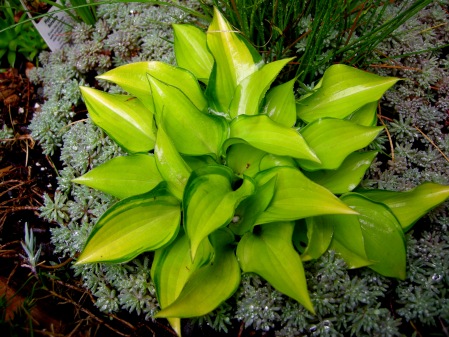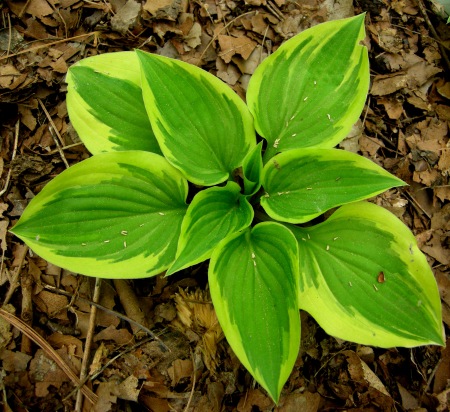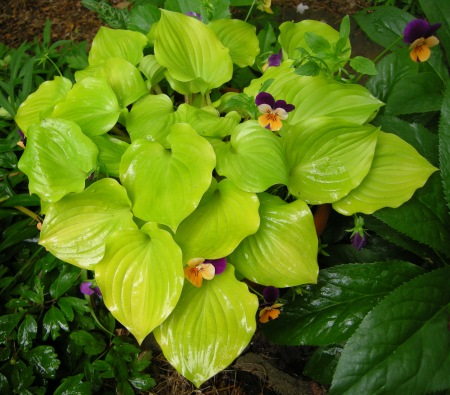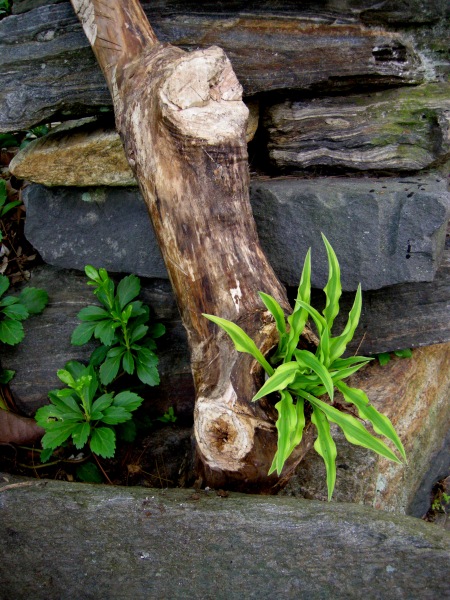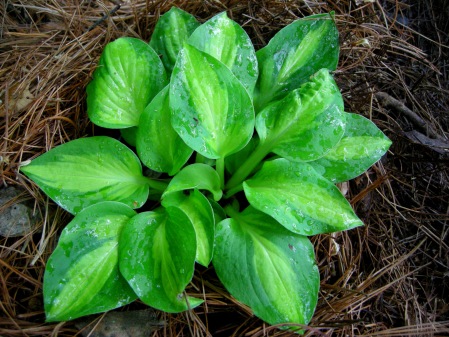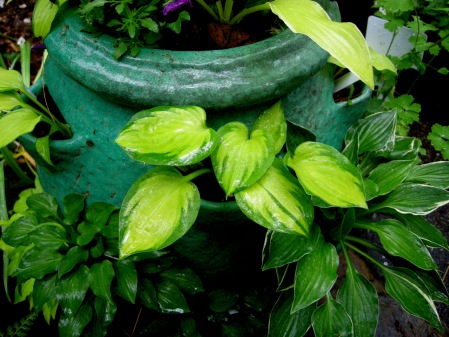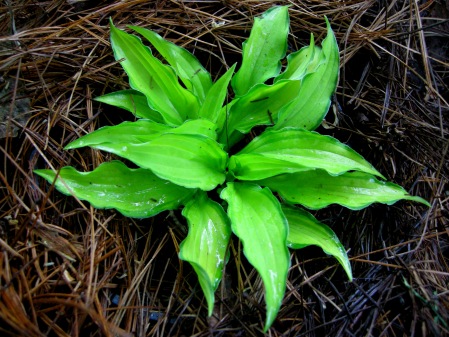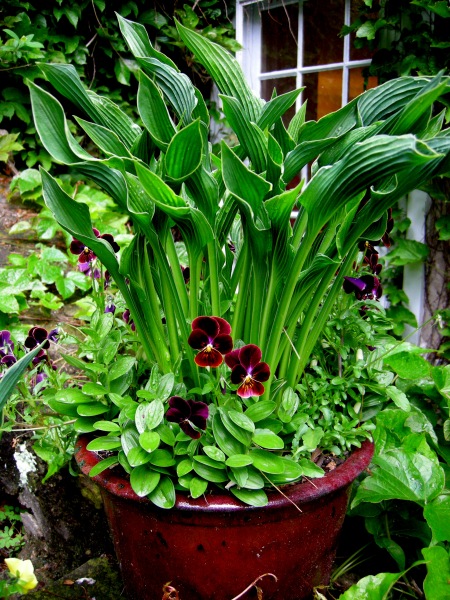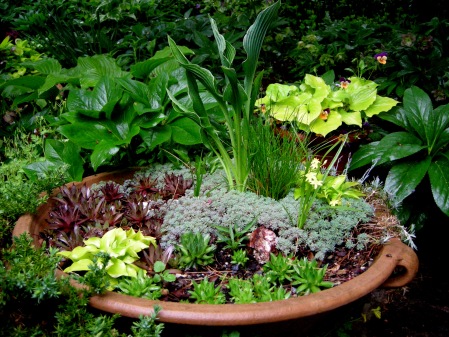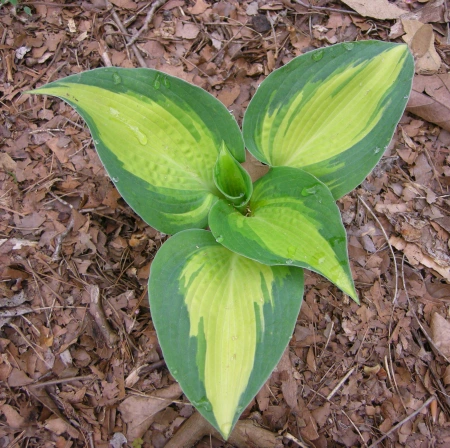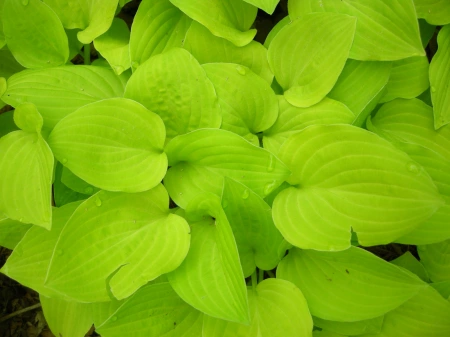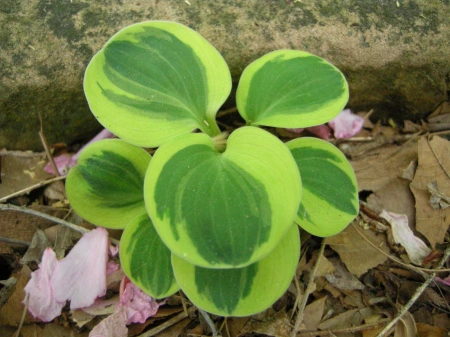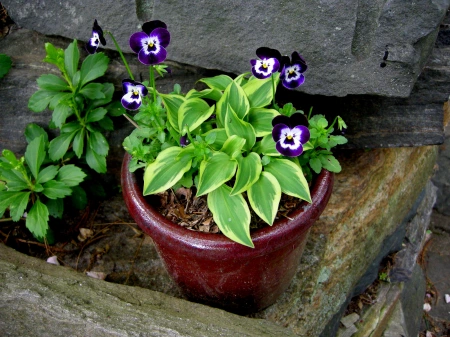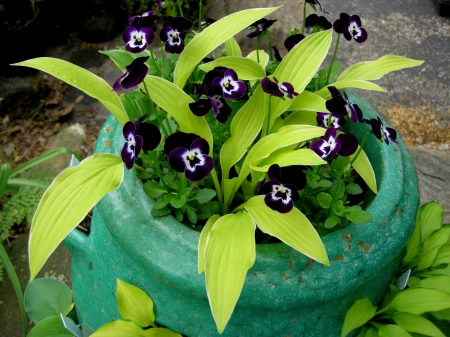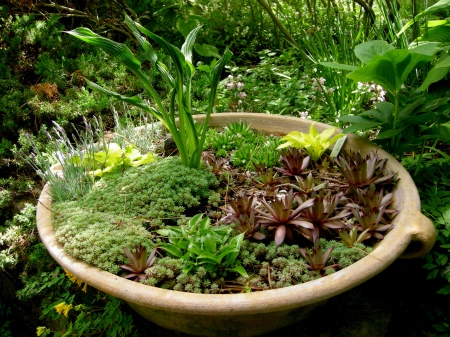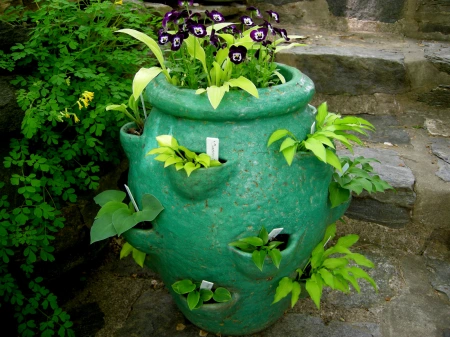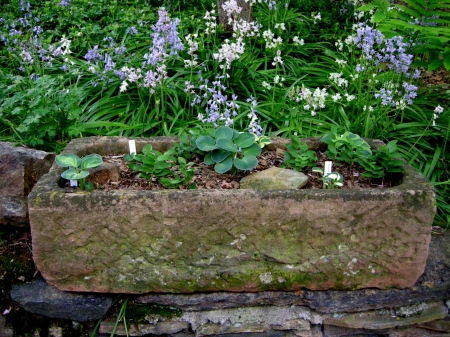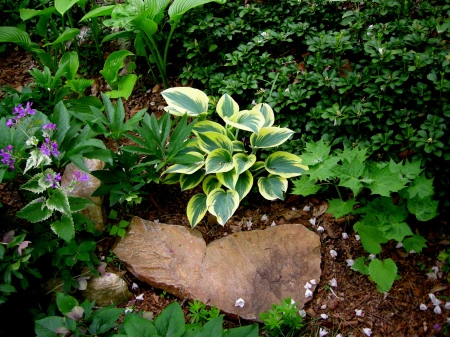 One of the most beautiful times in my garden is when the wisteria is in full bloom. Under it is planted one of my candidates for Top 10 Hostas, ‘Stained Glass’, hosta of the year for 2006. Available at CSG.
One of the most beautiful times in my garden is when the wisteria is in full bloom. Under it is planted one of my candidates for Top 10 Hostas, ‘Stained Glass’, hosta of the year for 2006. Available at CSG.
With the latest issue of its beautiful and informative journal, the American Hosta Society sent its members a form asking them to vote for their 10 favorite “regular” hostas and 5 favorite minis. People often ask me which hostas are my favorites, and the AHS Popularity Poll sent me out into the garden to make a list. Naturally I brought my camera, and I thought I would show you some of the contenders. To avoid disappointment, I have indicated which are for sale at Carolyn’s Shade Gardens (CSG). Sadly, some of my favorites are not readily available.
Nursery News: Carolyn’s Shade Gardens is a retail nursery located in Bryn Mawr, PA, specializing in showy, colorful, and unusual plants for shade. The only plants that we ship are snowdrops and miniature hostas. For catalogues and announcements of events, please send your full name, location, and phone number (for back up use only) to carolyn@carolynsshadegardens.com. Click here to get to the home page of our website for catalogues and information about our nursery and to subscribe to our blog.
.
 Hosta ‘Paul’s Glory, hosta of the year for 1999. Available at CSG.
Hosta ‘Paul’s Glory, hosta of the year for 1999. Available at CSG.
.
 Hosta ‘Paradise Island’ on the left and ‘Maui Buttercups’ on the right. They are not really in contention, but they looked so beautiful together under the ‘Paliban’ lilac.
Hosta ‘Paradise Island’ on the left and ‘Maui Buttercups’ on the right. They are not really in contention, but they looked so beautiful together under the ‘Paliban’ lilac.
.
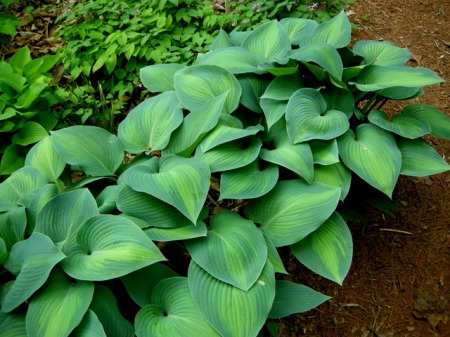 Hosta ‘Paradise Joyce’ hasn’t been available for years, but it really is one of the best.
Hosta ‘Paradise Joyce’ hasn’t been available for years, but it really is one of the best.
.
 Hosta ‘Eye Declare’, here with ‘Lynnhaven Carpet’ erigeron in the foreground and ‘Stainless Steel’ coralbells in the background, may be my favorite big hosta. Again it is not available in the trade.
Hosta ‘Eye Declare’, here with ‘Lynnhaven Carpet’ erigeron in the foreground and ‘Stainless Steel’ coralbells in the background, may be my favorite big hosta. Again it is not available in the trade.
.
 Hosta ‘First Frost’, 2010 hosta of the year, with its blue and yellow spring coloring is just gorgeous. Available at CSG.
Hosta ‘First Frost’, 2010 hosta of the year, with its blue and yellow spring coloring is just gorgeous. Available at CSG.
.
 Hosta ‘El Nino’, here with white-flowered hardy geranium, has always been one of my favorites with its unique blue and ivory coloring. It is difficult to find, but I have it for sale this year.
Hosta ‘El Nino’, here with white-flowered hardy geranium, has always been one of my favorites with its unique blue and ivory coloring. It is difficult to find, but I have it for sale this year.
.
 A close up of ‘El Nino’, a star in my silver and blue garden. Available at CSG.
A close up of ‘El Nino’, a star in my silver and blue garden. Available at CSG.
.
 Hosta ‘Great Expectations’ really started to thrive when I moved it from full shade to an eastern-facing location. Available at CSG.
Hosta ‘Great Expectations’ really started to thrive when I moved it from full shade to an eastern-facing location. Available at CSG.
.
 Hosta ‘Brother Stefan’ seems to like sun too, here it faces southwest and is paired with ‘Goldheart’ bleeding-heart. I think it should have been hosta of the year rather than the somewhat similar ‘Paradigm’. Available at CSG.
Hosta ‘Brother Stefan’ seems to like sun too, here it faces southwest and is paired with ‘Goldheart’ bleeding-heart. I think it should have been hosta of the year rather than the somewhat similar ‘Paradigm’. Available at CSG.
.
 Hosta ‘Crumb Cake’, here in a container, is definitely on my top ten list. It is a small hosta, but the leaves are too big for it to qualify as a mini.
Hosta ‘Crumb Cake’, here in a container, is definitely on my top ten list. It is a small hosta, but the leaves are too big for it to qualify as a mini.
There were other contenders not pictured here: ‘Blue Angel’, ‘Sagae’ (2000 hosta of the year), ‘Abiqua Drinking Gourd’ (2014 hosta of the year), adorable ‘Blue Mouse Ears’ (2008 hosta of the year), whose leaves are also a little too big to be a mini, the amazing ‘Praying Hands’ (2011 hosta of the year), ‘Remember Me’, and H. nigrescens. I guess I will have to do another post. I will definitely have to narrow down my list! That’s all for now but look for another post on my favorite hostas soon.
Carolyn
Nursery Happenings: To order miniature hostas for shipping or pick up at our nursery, click here to access the catalogue. Our third open house, featuring ferns, hostas, and hardy geraniums is Saturday, May 16, from 10 am to 3 pm. However, don’t’ wait until then—you can stop by anytime by appointment to purchase these wonderful plants. Just send me an email at carolynsshadegardens@verizon.net with some suggested dates and times that you would like to visit.
Carolyn’s Shade Gardens is a local retail nursery in Bryn Mawr, Pennsylvania, U.S., zone 6b/7a. The only plants that we mail order are snowdrops and miniature hostas and only within the US.
If you are within visiting distance and would like to receive catalogues and information about customer events, please send your full name and phone number to carolynsshadegardens@verizon.net. Subscribing to my blog does not sign you up to receive this information.
Facebook: Carolyn’s Shade Gardens has a Facebook Page where I post single photos, garden tips, and other information that doesn’t fit into a blog post. You can look at my Facebook page here or click the Like button on my right sidebar here.
Notes: Every word that appears in orange on my blog is a link that you can click for more information. If you want to return to my blog’s homepage to access the sidebar information (catalogues, previous articles, etc.) or to subscribe to my blog, just click here.

